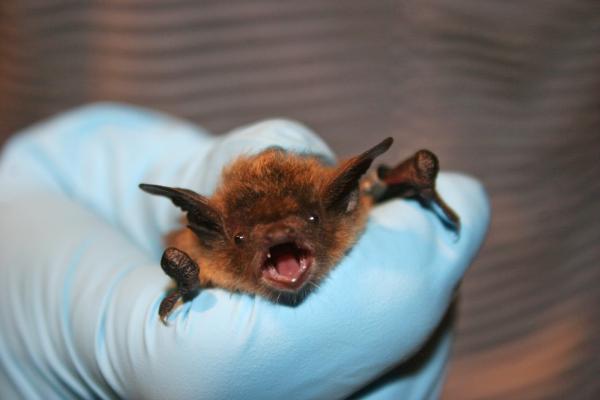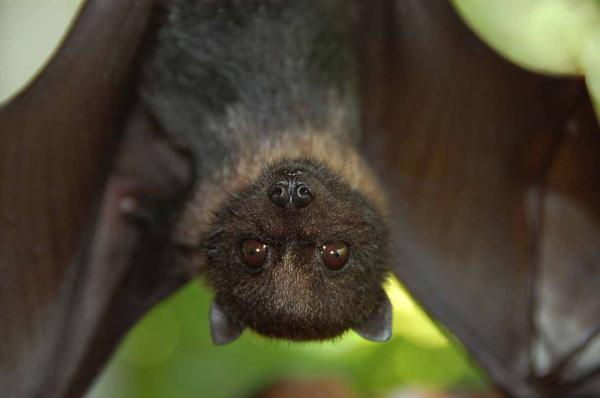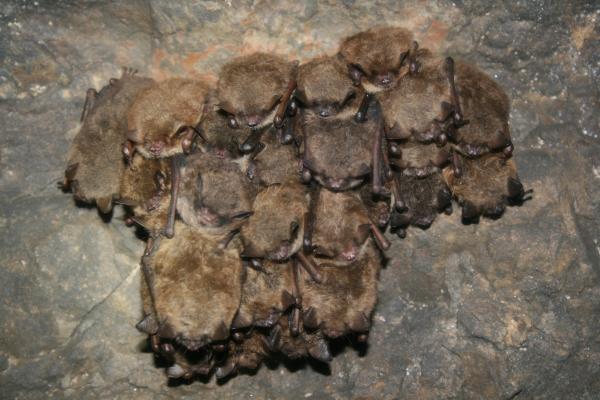I love bats. I learned something today from this. Thank you Cat!
Have you thanked a bat, today?
Whether you see them as cute flying mammals or scary mice with wings, bats perform important public services in our world, and are fascinating, to boot!
Bats are helpful.
Bats eat insects. Lots of insects!
We are very lucky that Vermont is home to 9 different bat species, and they’re all insectivores, helping to control insect populations. The National Park Service likens the appetites of these bats to a teenage boy eating 200 quarter-pound burgers in one night! Bats in North America provide $3.7 billion dollars worth of pest control each year.
Bats love flowers, and they pollinate them.
While they don’t live in Vermont, nectar-drinking bats help pollinate plants in many places around the world. In the southwest United States and in Mexico, for example, agave plants, which only bloom at night, rely on nectar-loving bats to pollinate their flowers. So bats play a crucial role in the creation of agave syrups and tequila!
Bats eat fruits, and disperse seeds.
Fruit bats, or fruit-eating bats, play an important role in dispersing the seeds of the fruit they eat. This helps maintain plant populations in tropical areas of Africa, Asia, Australia, and the pacific islands.
Bats are cool!
They hang upside down!
Bats are the only animals that live most of their lives hanging upside down.There’s little to no competition with other types of animals for roosting space, and it’s much easier to drop and take flight from this position. Also, the pull of gravity causes the tendons in a bat’s feet to close around and grip whatever surface it’s hanging from, so it's effortless! When a bat needs to urinate or defecate, it flips itself right side up by the “thumb” of its wings, so it doesn’t soil its fur. (Bats are very clean animals and take pride in their grooming--similar to a cat.)
Bats emerge for their night flight from the large bat house at the Inn at Shelburne Farms. Look who's closely watching them, hoping to snag a bat for a meal!
Most bats cannot take off from the ground.
Because they’re built for dropping into flight from an upside down position, bats cannot take off from the ground. About once every two years, I’ll find a grounded bat on the farm. I usually just need to lift it up to a safe tree branch about 3 feet from the ground, and once it’s had a moment to rest or wake up, it will drop from the branch and take flight. Because bats can contract rabies like any mammal, you must always be safe and only use thick gloves or cloth to handle a bat. Note that studies have shown that only around 1% of bats worldwide carry the disease.
Bat are mammals, but definitely not rodents
Bats are the only mammals that truly fly. Other “flying” mammals are really just gliding - like Vermont’s Northern Flying Squirrel. A mother bat feeds milk to her baby (called a “pup”), just like other mammals. Each mother bat has one pup a year, or, rarely, a set of twins. (Check out these orphaned baby bats in Australia being bottle-fed.)
Bats "see" better by listening
Although Vermont bats can see, they rely more heavily on echolocation to navigate and locate prey in the dark of night. The bats will vocalize (most often in frequencies that the human ear can not detect) and listen for the echoes of their calls bouncing off of anything in their path. They can both detect obstacles and pinpoint the location of their quick, erratically moving insect prey! Some insects have evolved ways to avoid becoming a bat’s meal, like the fuzzy wings or long curly tails on some moths, which confuse a bat’s echolocation signals.
Not all bats hibernate.
As we all know, once colder days set in, insects disappear, so Vermont's insectivore bats must adapt to foodless winters by either hibernating or migrating. Six of Vermont’s nine bat species hibernate, while three of them follow the insects to warmer climates in the winter. Because they don't hibernate in caves, these three species are not affected by the dreaded white nose fungus.
And, we can’t forget about vampire bats!
Dun dun dunnnnnnnn… No need to fear, the three known species of vampire bats are native to Central and South america. Also, they don’t actively seek human blood to eat. When vampire bats consume blood from their prey - most often livestock and birds - their saliva secretes an anticoagulant to make their prey’s blood flow more readily. (Mosquitoes do the same thing.) This enzyme has played an important role in medical advances for stroke victims and heart attack prevention. (Also, I can’t help pointing out that vampire bats can run on the ground!)
Bats are threatened
Threats to bat survival
Sadly, bats around the world face many dangers, including habitat loss, climate change, destruction of roosts, and culling of species deemed to be a nuisance - and that’s just to name a few! Here in Vermont, White Nose Syndrome is a major danger to our bats. According to Vermont Fish and Wildlife, White Nose Syndrome has killed almost 6 million bats in the northeastern United States alone since 2006.
This disease is caused by a fungus that attacks the bare skin of hibernating bats. The fungus causes a bat to become active during this lowered metabolic state, so it uses up crucial fat stores. This in turn leads to starvation, dehydration, pH imbalances, and ultimately, death. There is still no cure for White Nose Syndrome but scientists are working together to figure out how we can save bats.
How can you help our local bats?
Spread the love for bats. Learn more about their fascinating characteristics. Put up a bat hotel on your property. If you must remove or exclude bats from your site, contact a professional who will do it in a responsible and humane way.
In Vermont, Barry Genzlenger is one of those people. Barry took his love of bats to another level by founding the Vermont Bat Center and becoming Vermont’s only licensed bat rehabilitator. (Follow them on Facebook!) When asked how does one become a bat rehabber, Barry responded, “It's simple, really. All you need is a Rehabilitators Permit and a Threatened and Endangered Species Permit from the Vermont Fish and Wildlife Department. But getting those permits is hard! You need lots of knowledge about bats and bat care, hours of hands on training from a bat rehabber, a facility suitable for bat care, a veterinarian who will be their medical support person, two recommendations and finally, you must pass the Rehabbers Exam from VFWD. Does that sound simple?
I hope you learned some fun facts about bats and how important and fascinating they are. Next time you see one swooping through the night sky, give it an air high five!
For further reading:
Comments
I am a pulmonologist and have an interest in fungal disease like candidiasis, aspergillosis, histoplasmosis, coccidioidomycosis etc. I am also an expert in aersol therapies for asthma, COPD etc. Since bats tend to hybernate in clusters, could not antifungal aerosols be sprayed into their places of hybernation once a week for instance?


